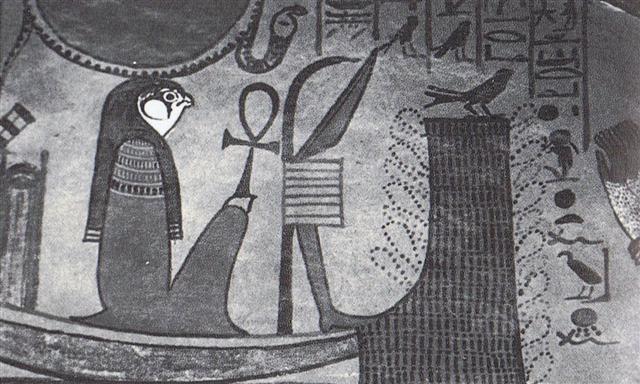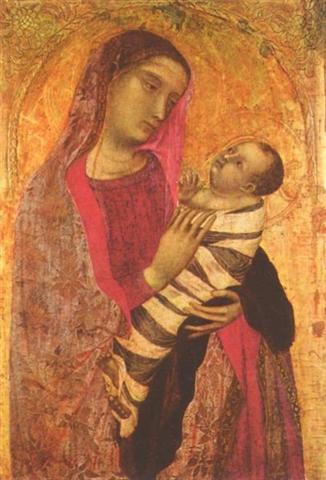3-7. In February 14 (All Hearts' Day) the Full Moon would
ideally be at day 225 and a week later the last glyph in line
Ea3 should correspond to day 45 (2-14) + 7 = 52 (February 21,
427, *347):
|
Jan 29
(394) |
*11 |
Febr 9
(40) |
*3 |
Febr 12
(408) |
13 |
2-14 (45) |
|
*314
→
π |
*325 |
*328 |
*329 |
*330 |
|
ALBALI |
SADALSUD |
NASHIRA |
DENEB
ALGIEDI |
ALL
HEARTS' DAY |
|
Bat |
Rat |
Fortunate
One |
Tail of
the Goat |
|
10 Girl |
11 Emptiness |
26
Western One in the Tail of the Goat |
27
Eastern One in the Tail of the Goat |
War-god
Kuu returned to power |
|
(29 +
180 = 209) |
Aug 8
(220) |
Aug
11 (408 - 185) |
12 (224) |
(45 + 180 =
225) |
|
Febr 13 |
All Hearts' Day |
15 (46) |
|
Arkat sha hi-na Shahū-27
(Eastern One in the Tail of the Goat)
ENIF (The Nose) =
ε
Pegasi, ERAKIS (the Dancer) =
μ
Cephei
(329.2),
46 CAPRICORNI,
JIH (the Sun) =
κ
Pegasi
(329.3),
ι
Piscis Austrini (329.4),
λ
Capricorni (329.6),
ν
Cephei (329.7),
DENEB ALGIEDI =
δ
Capricorni
(329.8)
*288.0 = *329.4 - *41.4 |
θ
Piscis Austrini (330.1),
λ
Oct.
(330.7) |
KUH (Weeping)
=
μ
Capricorni (331.4),
γ
Gruis (331.5)
*290.0 = *331.4 - *41.4 |
|
Aug 12 |
13 (45 + 180 =
225) |
14 |
 |
 |
 |
|
Ea3-27 (84 + 8) |
Ea3-28 |
Ea3-29 (46 + 48) |
|
tagata - te vai |
hokohuki - kiore - hokohuki -
kiore |
kiore kikiu |
|
... In the
inscriptions of Dendera, published by Dümichen, the
goddess Hathor is called 'lady of every joy'.
For once, Dümichen adds: Literally ... 'the lady of
every heart circuit'. This is not to say that the
Egyptians had discovered the circulation of the
blood. But the determinative sign for 'heart' often
figures as the plumb bob at
the end of a plumb line coming
from a well-known astronomical or surveying device,
the merkhet. Evidently, 'heart' is something
very specific, as it were the 'center of gravity'
... See Aeg.Wb. 2, pp. 55f. for sign of the heart (ib)
as expressing generally 'the middle, the center'.
And this may lead in quite another direction. The
Arabs preserved a name for
Canopus - besides calling the star Kalb
at-tai-man ('heart of the south') ... Suhail
el-wezn, 'Canopus Ponderosus', the
heavy-weighing Canopus, a name promptly declared
meaningless by the experts, but which could well
have belonged to an archaic system in which Canopus
was the weight at the end of the plumb line, as
befitted its important position as a heavy star at
the South Pole of the 'waters below'. Here is a
chain of inferences which might or might not be
valid, but it is allowable to test it, and no
inference at all would come from the 'lady of every
joy'. The line seems to state that Hathor (=
Hat Hor, 'House of Horus') 'rules' the
revolution of a specific celestial body - whether or
not Canopus is alluded to - or, if we can trust the
translation 'every', the revolution of all celestial
bodies. As concerns the identity of the ruling lady,
the greater possibility speaks for Sirius, but Venus
cannot be excluded; in Mexico, too, Venus is called
'heart of the earth'. The reader is invited to
imagine for himself what many thousands of such
pseudo-primitive or poetic interpretations must lead
to: a disfigured interpretation of Egyptian
intellectual life ...

... The
Pythagoreans make Phaeton fall into Eridanus,
burning part of its water, and glowing still at the
time when the Argonauts passed by. Ovid stated that
since the fall the Nile hides its sources. Rigveda
9.73.3 says that the Great Varuna has hidden the
ocean. The Mahabharata tells in its own style why
the 'heavenly Ganga' had to be brought down. At the
end of the Golden Age (Krita Yuga) a class of
Asura who had fought against the 'gods' hid
themselves in the ocean where the gods could not
reach them, and planned to overthrow the government.
So the gods implored Agastya (Canopus, alpha
Carinae = Eridu) for help. The great Rishi did as he
was bidden, drank up the water of the ocean, and
thus laid bare the enemies, who were then slain by
the gods. But now, there was no ocean anymore!
Implored by the gods to fill the sea again, the Holy
One replied: 'That water in sooth hath been digested
by me. Some other expedient, therefore, must be
thought of by you, if ye desire to make endeavour to
fill the ocean ... |
The number of glyphs in line Ea3 is 35 = 28 + a week. Might
not the double hokohuki - kiore statement of Metoro at February 14
(→ 2-14 → 314 - 100) indicate a place not yet
ruled by the Sun but still ruled by the Double-faced Moon? March
14 (0h minus a week) was a π day.
... The Celtic year was divided into two halves with the second
half beginning in July, apparently after a seven-day wake, or
funeral feast, in the oak-king's honour ...
.jpg)
... Janus was perhaps not originally
double-headed: he may have borrowed this peculiarity from
the Goddess herself who at the Carmentalia, the Carmenta
Festival in early January, was addressed by her celebrants
as 'Postvorta' and 'Antevorta' - 'she who looks both back
and forward'
...
February 9 (40) -
27 (precession since Roman times) =
'January 13
(378 → Saturn).
|
Febr 16 |
17 (14 * 29½) |
18 (414) |
19 (50) |
20 |
21 (80 - 4 *
7) |
|
No star listed (332) |
η Piscis Austrini (333.4)
*292.0 = *333.4 - *41.4 |
Rooftop-12
(Swallow)
22h (334.8)
KAE UH (Roof) =
ο
Aquarii
(334.0),
AL KURHAH (White Spot) =
ξ
Cephei (334.4),
SADALMELIK (Lucky King) =
α
Aquarii,
AL DHANAB (The Tail) =
λ
Gruis
(334.6),
ι
Aquarii,
ν
Pegasi (334.7)
*293.0 = *334.4 - *41.4 |
ι
Pegasi (335.0),
ALNAIR (The Bright One) =
α
Gruis
(335.1),
μ
Piscis Austrini,
υ
Piscis Austrini (335.3),
WOO (Pestle) =
π
Pegasi
(335.7),
BAHAM =
θ
Pegasi (Good Luck of the Two Beasts),
τ
Piscis Austrini (335.8) |
ζ
Cephei (336.2),
λ
Cephei (336.3), -/270 Lac.
(336.7), λ Piscis Austrini (336.8) |
μ
Gruis (337.0),
ε
Cephei (337.2), 1/325 Lac. (337.3),
ANCHA (Hip) =
θ
Aquarii (337.4),
ψ
Oct.
(337.5), α Tucanae (337.9)
*296.0 = *337.4 - *41.4 |
|
 |
 |
 |
 |
 |
 |
 |
|
Ea3-30 (95) |
Ea3-31 |
Ea3-32 |
Ea3-33 |
Ea3-34 |
Ea3-35 (100) |
|
tagata rere te toki |
kua tua ko te tino
|
te
toki |
marama |
toki |
|
Tino. 1. Belly (as reported by a
Spaniard in 1770). 2. Genitalia (modern usage).
3. Trunk (of a tree), keel (of a boat); tino
maîka, banana trunk; tino vaka, keel.
Vanaga. Body, matter; mea tino, material;
tino kore, incorporeal. P Pau.: tino,
a matter, a subject. Mgv.: tino, the
body, trunk. Mq.: tino, nino, the
body. Ta.: tino, id. Churchill.
 |
The bird named Swallow presumably got its name from
its habit of swallowing flies (→ vessels
for carrying ghosts):
... From a religious point of view, the
high regard for flies, whose
increase or reduction causes a similar increase or reduction
in the size of the human population, is interesting,
even more so because swarms of flies are often a real
nuisance on Easter Island, something most visitors have
commented on in vivid language. The explanation seems to be
that there is a parallel relationship between flies and
human souls, in this case, the souls of the unborn. There is
a widespread belief throughout Polynesia that insects are
the embodiment of numinous beings, such as gods or the
spirits of the dead, and this concept extends into Southeast
Asia, where insects are seen as the embodiment of the soul
...

When the sooty terns (manu tara) arrived in multitudes
to the southwest corner of Easter Island

it indicated the arrival of a new year, a
return to life. Another name for this cardinal type of bird
was sea swallow.

|
Jan 29
(394) |
*1 |
31
(396) |
*3 |
Febr 4
(400) |
*5 |
9
(40 = 220 - 180) |
*2 |
11
(42) |
|
*314
→
π |
Ea3-14
→ π |
*320.0 |
*325 |
*327 |
|
ALBALI (ε
Aquarii) |
μ (316.0) |
ν Aquarii |
SADALSUD
(β Aquarii) |
BUNDA
(Foundation) = ξ Aquarii |
|
Bat |
 |
DRAMASA
|
Rat |
SIRIUS |
|
10 Girl |
11 Emptiness |
|
(29 +
180 = 209) |
Aug 8
(220) |

|
Febr 12 (408) |
13 |
2-14 (45) |
*3 |
414 = 14 *
29½ + 1 = 7 * 7 |
|
*328 |
*329 |
*330 |
Roof,
ο Aquarii (*334.0) |
|
NASHIRA |
DENEB ALGIEDI |
ALL HEARTS' DAY |
SAD-AL-MELIK (α) |
|
Fortunate One |
Tail of the Goat |
The Lucky
King |
|
26 Western One in
the Tail of the Goat |
27 Eastern One in
the Tail of the Goat |
War-god Kuu
returned to power |
12 ROOFTOP
(Swallow) |
|
Aug 11 (408
- 185) |
12 (224) |
13 (45 + 180 =
225) |
17 (229 → 414 -
185) |
Surely the star
Bharani
had been chosen for its right ascension postion (*41.4)
implicating day 365 + 7 * 7 = 414 as counted from January 1
in the preceding year.

|



.jpg)







